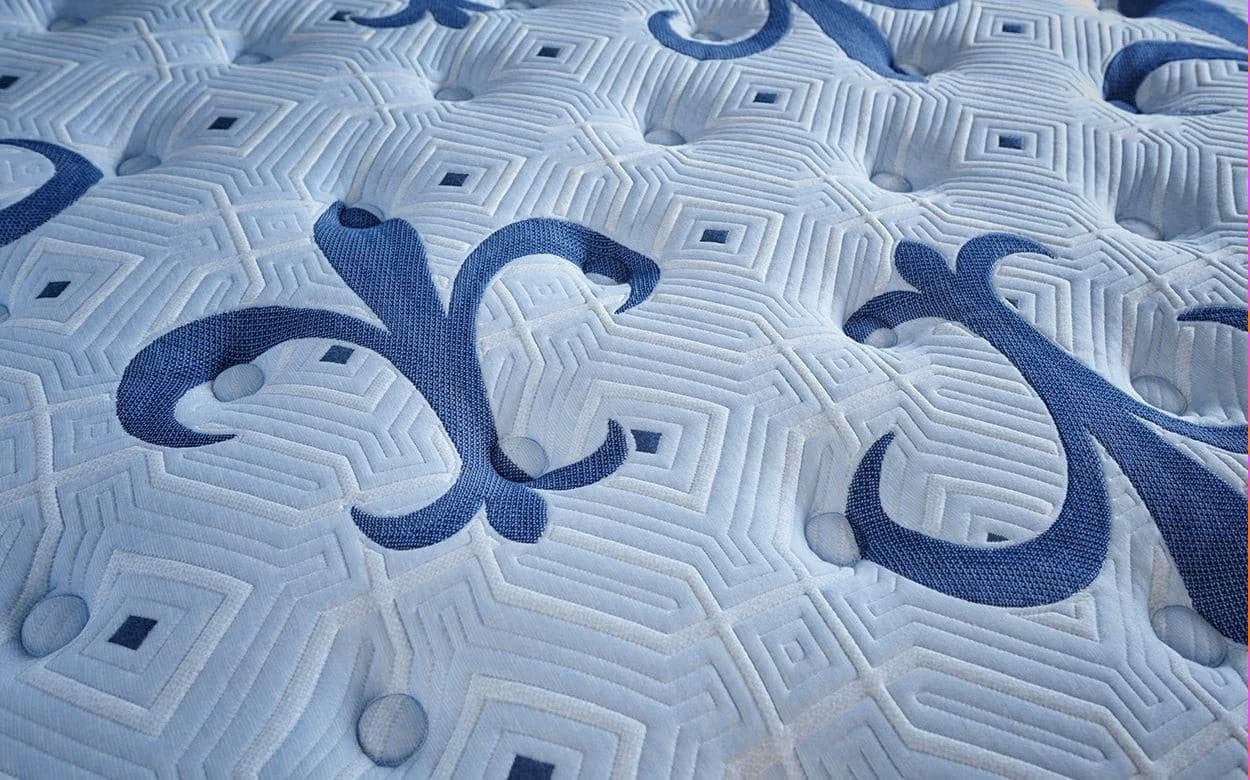Bed bugs those tiny, elusive pests are a homeowner’s nightmare, especially when they invade the sanctuary of your sleep: the foam mattress. Because foam mattresses often lack the visible seams and weaving of traditional innerspring mattresses, detecting bed bugs early can be more challenging and critical to prevent a larger infestation.
In this blog, we’ll delve into the unmistakable signs of bed bugs on foam mattresses, explain how foam’s unique properties can affect detection and treatment, and guide you step-by-step through what to do if you suspect bed bugs have made a home in your sleep surface.
By the end, you'll be empowered with knowledge and clear actions to safeguard both your mattress and your peace of mind.
Table of Content
- Introduction
- Key Takeaways
- The Science Behind Bed Bugs and Foam Mattresses
- Why Foam Is a Different Battlefield
- Signs of Bed Bugs on Foam Mattresses
- Comparison Table
- Visual Graph
- What to Do If You Find Signs
- Product Review Section: Mattress Encasements for Bed Bugs
- Conclusion
- Frequently Asked Questions
Key Takeaways
- Foam mattresses can mask bed bug signs more effectively than traditional beds, due to their uniform surface and lack of coils.
- Look for rust-colored spots, live bugs, molted skins, and unusual odors.
- Bed bug bites, while not definitive, are often the first human-felt clue.
- Early detection allows for minimally invasive treatments like thorough vacuuming, steam, and encasement.
- High-quality mattress encasements are essential opt for allergen-rated, bite-proof, high-durability options.
- Professional pest control is advisable in moderate to severe infestations.
- Prevent future issues by cleaning bedding, decluttering areas around the bed, and inspecting luggage after travel.
The Science Behind Bed Bugs and Foam Mattresses
Bed bugs (Cimex lectularius) are nocturnal blood-feeding insects that hide in micro-crevices during the day waiting until their hosts fall asleep to feed. Foam mattresses differ from innerspring types in that they lack defined seams, coil rows, or gaps which often serve as harborage. Instead, bed bugs may infiltrate the foam’s outer layers, edges, or even the underlying box spring or foundation. Because foam surfaces are uniformly smooth, spotting telltale signs requires heightened attention.
Why Foam Is a Different Battlefield
- Lack of Seams and Edges: Without piping, seams, or tufting, there's fewer obvious hiding spots but this doesn't mean fewer hiding spots exist; bed bugs may burrow into edge crevices or micro-tears in the foam.
- Reduced Surface Texture: Inspection is harder when there isn’t textured fabric to capture fecal stains or molted skins visibly.
- Potential for Deep Penetration: Soft-density foam (e.g. memory foam) may allow bugs to penetrate deeper, making standard surface cleaning less effective.
- Heat Resistance Differences: Dense foam is more thermally resilient than innerspring, which can complicate heat-based treatments and caution must be exercised to avoid damage.
Signs of Bed Bugs on Foam Mattresses
1. Physical Signs on the Mattress Surface
- Rust-colored stains or spots: caused by bed bug fecal matter or crushed bugs.
- Molted exoskeletons: translucent shells left behind as nymphs grow.
- Dead or live bugs: visible along the edges, seams (if any), or zipper folds of foam encasings.
- Tiny white eggs or eggshells: approximately 1 mm, often stuck in foam indentations or near corners.
2. Bites and Body Clues
- Clustered bites in a line or zig-zag: commonly appear on exposed skin (arms, legs, torso).
- Itchy, red welts: though certain individuals may not react, most experience mild to moderate irritation.
3. Behavioral Clues from the Pests
- Nocturnal scratching or itching sensations on skin upon waking
- Ticks on pets: pets sleeping on the same bed may show bites or behavioral discomfort.
4. Odor and Other Subtle Signals
- Sweet, musty odor: pheromones secreted by bed bugs create a distinctive, sweet-musky smellsometimes compared to coriander or damp wood.
- Unexplained dust: especially around the zipper line or foam slits, which may be molting dust.
Comparison Table
|
Feature |
Foam Mattress |
Innerspring Mattress |
|
Visible seams and piped areas |
Generally fewer; smoother surface |
Multiple seams, piping, tufting |
|
Fecal/neonate debris visibility |
Low unless inspected closely |
High; stains often accumulate in seams |
|
Bug penetration depth |
Deep penetration possible |
Mostly surface-level hiding |
|
Heat-based treatment sensitivity |
Foam may deform; risk of damage |
More heat-stable (though check labels) |
|
Inspection ease |
Harder; requires edge picky inspection |
Easier; seams highlight signs |
|
Vacuum/steam access |
Limited to surface or edges |
Seams facilitate deeper access |
Visual Graph: Foam vs. Innerspring, Detection & Treatment Factors

What to Do If You Find Signs
Immediate Containment
- Avoid spreading: Do not shake or flip the mattress; this could dislodge bugs.
- Isolate: Place mattress on a clean, inert surface (e.g., tiled floor); avoid carpet.
- Use double-bag method: Slip the mattress into a large, robust plastic encasement or bag sealing edges to contain bugs and debris.
Clean, Vacuum, and Steam
- Vacuum carefully, especially along edges and seams. Use HEPA-filtered vacuum empty contents into sealed bag and dispose immediately.
- Steam-treat the surface if the foam tolerates up to ~110 °C (230 °F). Test a small area first to prevent damage.
Mattress Encasement Options
- Invest in encasements purpose-built for bed bug protection:
- Must be specifically labeled “bed bug proof” or “bite-proof”
- Zippered with antibacterial, washable covers that encase the entire mattress (and often foundation)
- Made of tightly woven fabric that blocks bed bug entry and escape
Professional Treatment
- If signs persist after cleaning:
- Call a licensed pest management professional
Options include:
- Heat treatment (elevating whole rooms to 45 °C+ for several hours)
- Selective insecticide application (low-odor, forward-thinking options suited for indoor human environments)
- Cryonite® or CO₂ snow treatment for spot applications on foam to avoid heat damage
Follow-Up and Prevention
- Monitor: Leave interceptors under bed legs to catch migrating bugs.
- Wash bedding weekly in hot water (≥ 60 °C), and dry highheat linen , pillows, and any nearby clothing even if no current infestation.
- Reduce clutter near bed to limit alternative hiding spots.
- Break the travel-infestation cycle: After vacations, inspect luggage and wash travel clothing immediately.
Product Review Section: Mattress Encasements for Bed Bugs
1. Encased Zippered Mattress Protector (10–14" Profile)
Overview
The Mattress Safeguard 10–14" Completely Encased Zippered Mattress Protector delivers comprehensive defense for standard-profile mattresses. It fully encases the mattress to guard against liquids, bed bugs, dust mites, and allergens. Constructed from breathable 100% polyester knit, it offers practical protection while remaining machine-washable and user-friendly.
Key Features
- Full encasement with a secure zippered design for 10–14″ mattresses
- Breathable and easy-care 100% polyester knit fabric
- Protection against liquids, bed bugs, dust mites, and allergens
- Machine-washable for regular hygiene maintenance
|
Pros |
Cons |
|
Thorough protective coverage for standard-height mattresses |
Fixed depth limit (10–14″); won’t fit deeper mattresses |
|
Breathable polyester construction optimized for comfort and washability |
Higher price point for some budgets |
|
Shields against multiple threats: pests, allergens, and liquids |
No visible customer reviews to verify real-world performance |
2. Encased Zippered Mattress Protector (14–18" Profile)
Overview
The Mattress Safeguard 14–18" Completely Encased Zippered Mattress Protector is engineered for deep-profile mattresses. Like its counterpart, it delivers total encasement and shields against liquids, pests, dust mites, and allergens. Made with the same breathable polyester knit, it’s easy to clean and designed for robust protection and comfort.
Key Features
- Full encasement tailored for deep mattresses (14–18″ depth)
- 100% polyester knit fabric that’s breathable and machine-washable
- Defense against bed bugs, dust mites, allergens, and fluids
|
Pros |
Cons |
|
Accommodates deep mattresses up to 18″—ideal for thick tops or hybrids |
Higher cost compared to basic protectors |
|
Multi-threat protection for peace of mind |
Lack of customer reviews to confirm performance |
|
Convenient care with machine-washable fabric |
Polyester may be less cool than natural-fiber alternatives |
Conclusion
- Minimal signs / early detection → DIY Vacuum + Steam + Premium Encasement is often sufficient.
- Moderate infestation or deep-penetration suspicion → Combine DIY with professional heat/spot treatment to avoid re-infestation.
- High-density foam or expensive memory foam bed → Hire a professional heat-safe pest control treatment or use advanced low-temperature options like cryonite/CO₂.
- Frequent travelers or shared accommodations → Monthly inspections, quality encasements, wall-mount luggage stands, and immediate laundering post-travel.
In all cases: the fastest and most effective route to bed-bug-free sleep is early detection, contained cleaning, and protective encasement.
Frequently Asked Questions
1. Can bed bugs live deep inside a foam mattress?
Yes especially in softer memory foam though they typically stay near the surface or edges where hosts feed. Full-depth penetration is rare but possible with extended infestation.
2. Will vacuuming alone remove bed bugs from foam?
Vacuuming helps reduce surface bugs and eggs, but likely won’t reach embedded bugs. It should be combined with steam, encasement, or professional treatment for effectiveness.
3. Is it safe to steam a memory foam mattress?
Only if your mattress can tolerate temperatures of 110 °C (230 °F)—test a small hidden area first. Too high or prolonged heat can permanently deform the foam.
4. How long can bed bugs survive without feeding?
Adult bed bugs may survive up to 6–12 months without feeding (longer in cool temperatures), though younger nymphs need regular blood meals.
5. Do mattress encasements trap moisture and cause mold?
High-quality encasements designed for bed bugs are typically breathable and moisture-resistant. To minimize mold risk, wash bedding regularly and ensure bedroom humidity stays below ~60%.
6. Can I treat a foam mattress by freezing?
Freezing can be effective but only if the core reaches –18 °C (0 °F) for several days. Given insulating foam, achieving that temperature throughout may be difficult without specialized equipment.
7. How long do I need to keep an encasement on after an infestation?
Most professionals recommend keeping it for at least one full bed bug lifecycle about 5–6 weeks to ensure all eggs hatch and emerging nymphs are contained.
8. Will bed bug repellents on my mattress fabric help?
Not reliably most are not proven and bugs can avoid treated zones. The best defense remains physical barriers, cleanliness, and professional interventions.
9. Should I dispose of my foam mattress if bed bugs are found?
In many cases, disposal isn’t necessary. If the mattress is in good condition, proper cleaning and encasement can save it plus disposal of infested mattresses may spread the infestation if not handled carefully.
10. When should I call a professional pest control instead of DIY?
Call a professional if you spot multiple signs: live bugs visible, widespread stains, bites despite cleaning, or if DIY methods aren’t reducing activity after 2–3 weeks.


